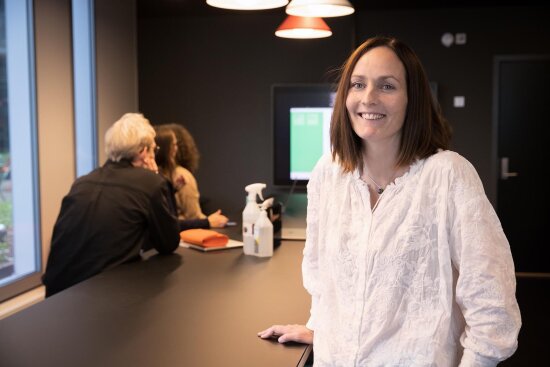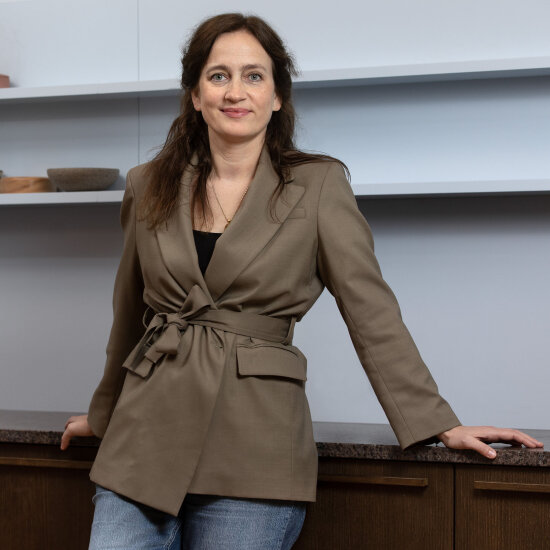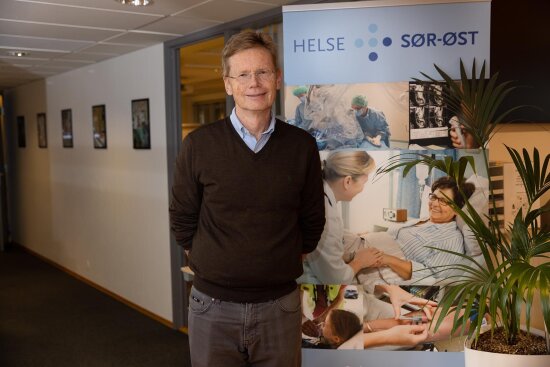“Ultimately, it’s the user who will love your product. If you don’t listen to them, you’ll lose out and erode your profitability,” says Marit Helgesen,
a service designer at Vipps who is convinced that Vipps’s success has to do with the fact that they’re good at understanding the impact of a user-centred approach.
“We’ve been allowed to incorporate a design principle and built up a culture in which design plays a central role in the way we build our products,” she says.
A good role model
Anne Elisabeth Bull, head of design-driven business development at DOGA, believes that Vipps is a good example of how design can underpin success.
“For Vipps, although the product was already established, the service it’s created and the way that it’s built it up is completely unique,” she says.
“It’s quite incredible that a payment service has become one of the most popular apps in Norway!”
She believes that Vipps’s success hinges on its user-centred approach and its decision to go wide when it comes to reaching out to users.
“It chose not only to reach out to young people and families with young children who seem like the most natural fit, but it took a step back for a broader look and to involve a vast pool of users of all genders, ages, and physical abilities.”
She believes that all companies and businesses have something to learn from involving designers early on in the process and, like Vipps has done, taking an all-encompassing approach to users.
“We believe good design can help satisfy needs throughout the user journey. If you offer a product, you soon offer a service, so you should think about who your users are and the services you want to offer them,” says Anne Elisabeth.
The success of the Vipps loop
Vipps was launched in 2015 and quickly became the most used mobile payment solution in Norway. It now has nearly 4 million users and “vippsing” has become part of our day-to-day vocabulary.
“Our mission from the outset was to make payment and identification simple and secure, to simplify people’s day-to-day lives, and to help create new habits,” says Marit.
The company is continuing to improve based on its users’ needs and their insights into Vipps’s products and services.
“The recipe for success comes from the fact that we developed a strategic platform early on that describes the core of our business and helps us to be a better team player. This is well-established in everyone working at Vipps,” says Marit.
She believes that the design-based product development model that they call “the Vipps loop” is also very important.
“With the Vipps loop, we work very much the same way as with design thinking. We work interactively, we communicate everything visually, and we test things often and early to learn before we build anything.”
Over the years, the design team at Vipps has grown from one designer to a team of eleven. Marit explains how, internally, they’re seeing how all the teams are crying out for designers, and that they’re always on the lookout for more designers.
“Design is so ingrained here that I think we’re forgetting that it’s a separate methodology. But hand on heart, I can say that Vipps is a product that is completely characterised by the design principles of service design. It makes it huge fun to be a service designer at Vipps,” Marit says.
Improves internal communication
Marit believes that the design methods strengthen both the way they gather user insight and how they ensure effective collaboration across the organisation.
“It also helps us understand how all Vipps’s product areas are interrelated, as it’s quite complicated behind the scenes,” she says.
She also explains how service design is central when launching new services, such as when they launched Vipps mobile, which is a fully integrated mobile subscription.
“When we launch new things and explore completely new areas, we’re dependent on testing things before releasing them to our four million users. Consequently, design is hugely important when communicating within the company what the new experience of Vipps will be and how new user journeys will be perceived,” Marit says.

Photo: Sverre Christian Jarild
Vital to share the recipe for success with more people
“Personally, I think service design is perhaps the most democratic and inclusive process that exists, and certainly it’s something that society benefits from,” she adds.
She believes that service design is a good way to detect rifts in the seabed as early as possible.
“For our part, it has given us a much more thought-through product and considerably reduced the risk of building errors,” says Marit.
“We can also communicate better, internally and externally, and prevent misunderstandings.”
Marit also believes that providing a good visual representation of new launches is important.
“Numbers and reports aren’t enough. You really have to visualise things, as this is what engages people.”
Consequently, Marit is pleased that design and innovation programs like DOGA’s DIP programme exist, as they help companies cross the threshold in their use of design methodology.
“It’s also a huge plus that DOGA rewards companies that are good in their class. Although we were pretty bad at inclusive design following DNB’s tear down, we turned things around completely and won a prize from DOGA.”
Marit thinks Vipps wouldn’t have been able to revolutionise payment solutions without working the way it has.
“The whole Vipps way, and the fact that we’ve some clever sparks here, has built up a culture of user insight that has been hugely important in our success,” Marit concludes.




